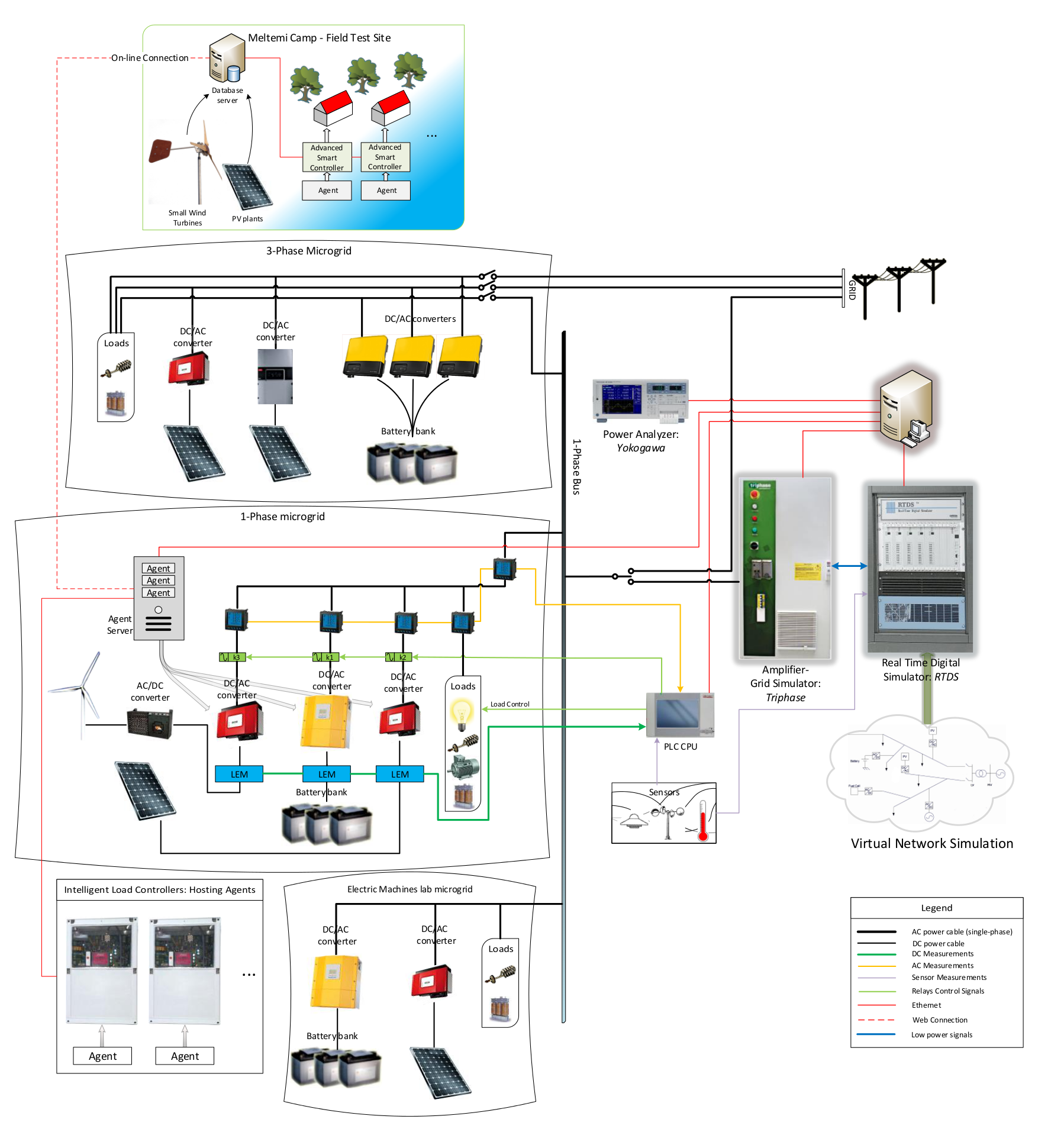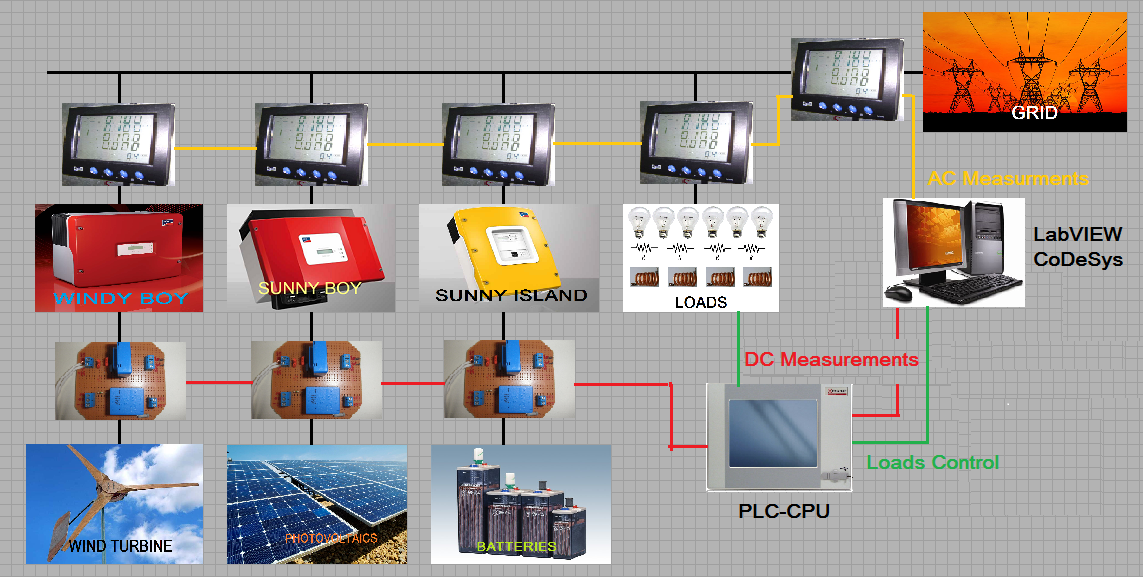The laboratory SCADA is implemented using a PLC (Programmable Logic Controller) system with Labview-CoDeSys software. More...
Laboratory Equipment and Capabilities
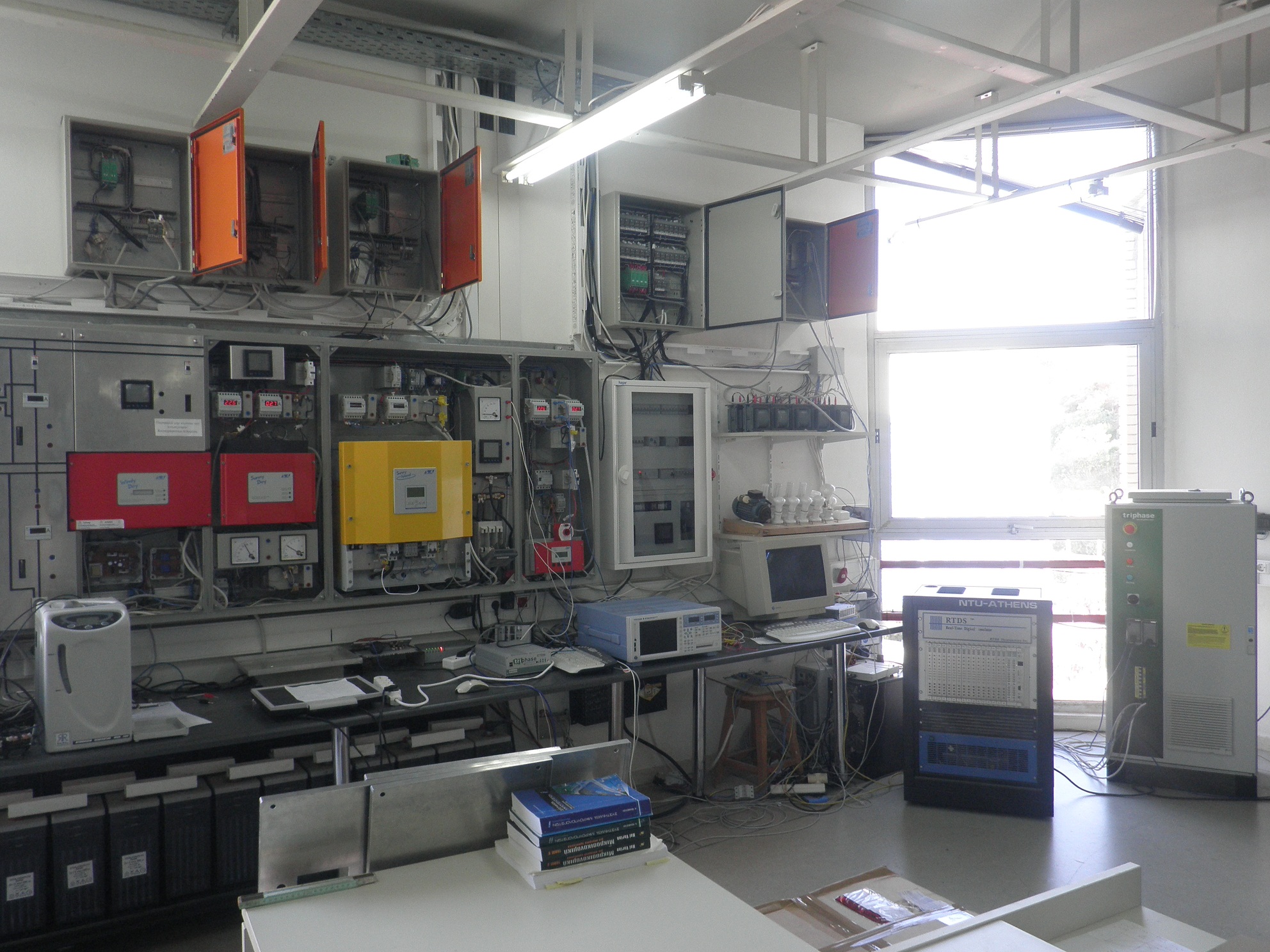
LOW VOLTAGE MICROGRID
A main component of the laboratory is a microgrid that comprises a PV generator, a small Wind Turbine, battery energy storage, controllable loads and a controlled interconnection to the local LV grid. The battery unit, the PV generator and the Wind Turbine are connected to the AC grid via fast-acting DC/AC power converters. The converters are suitably controlled to permit the operation of the system either interconnected to the LV network (grid-tied), or in stand-alone (island) mode, with a seamless transfer from the one mode to the other. More...
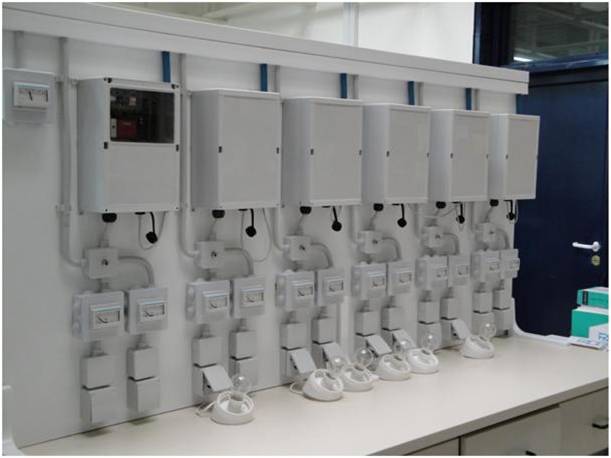
Multi-Agent System for Microgrid Operation
Multi-agent technology has been implemented for the control of the distributed sources and the loads of the LV microgrid. The system is developed in the Java based platform called Jade and communicates with the DER/DGs via industrial communication protocols such as OPC. Furthermore the laboratory is equipped with 10 load controllers. These are embedded systems with Java Virtual Machine, multiple analog & digital I/O as well TCP/IP connectivity. This system can be used to test in the laboratory or in a real test field various algorithms for distributed control of Microgrids and DG/RES. Some of the functionalities that can be tested are: market participation of the Loads or the DG/RES, formulation of a VPP, ancillary services provision, black start operation, islanded operation, multi-Microgrid operation and emergency load shedding. More...
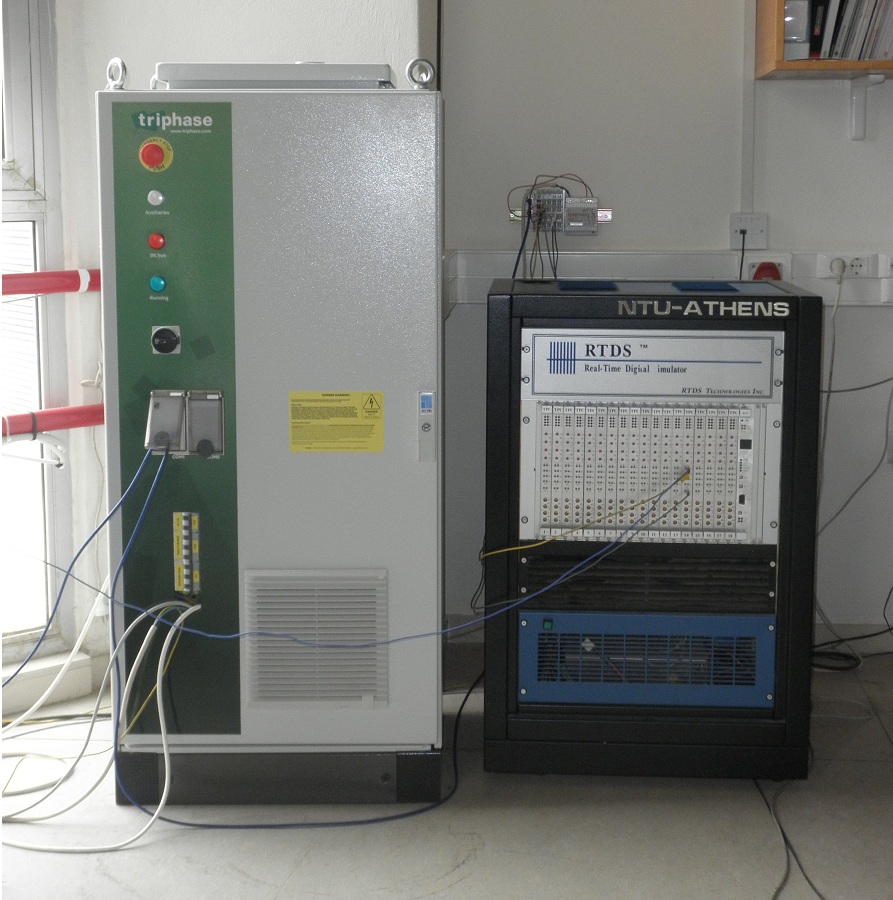
POWER-HARDWARE-IN-THE-LOOP (PHIL) SIMULATION ENVIRONMENT
Power Hardware in the Loop (PHIL) simulation is a very promising approach for simulating and testing of DER devices, available in only a few facilities world-wide. The PHIL facility developed at NTUA provides an efficient environment for studying interactions between hardware DER power devices and various simulated networks. A rack of the commercially available Real Time Digital Simulator RTDS® is operated. More...

CONTROLLER-HARDWARE-IN-THE-LOOP (CHIL) SIMULATION ENVIRONMENT
In the context of its involvement with microgrids and dispersed generation, the research group is active in the development and study of advanced control algorithms for power electronic converters (DC/DC, DC/AC, AC/DC/AC, etc.). Based on the real-time simulator (RTDS) and a controller provided by Triphase, it is possible to thoroughly test control algorithms of power converters in an environment that reveals “hidden” weaknesses and faults in the design of these algorithms. Specifically, the design of the control algorithm is performed in the controller of Triphase while the power electronics are simulated in the RTDS. The communication between the two systems is achieved through analog and digital signals. More...
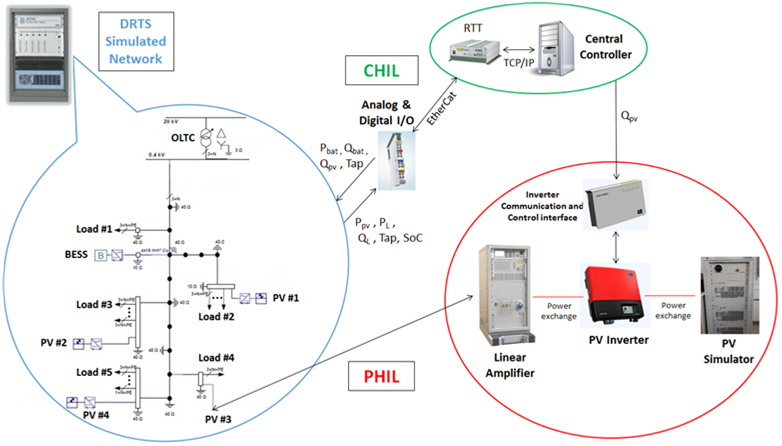
COMBINED CHIL AND PHIL TESTING OF SMART GRID CONTROLLERS
The combination of CHIL and PHIL simulation is applied for testing smart grid controllers (e.g. coordinated voltage controller). The setup allows testing a controller in a CHIL configuration, while critical power components are incorporated as physical devices (PHIL) allowing more realistic conditions. More...
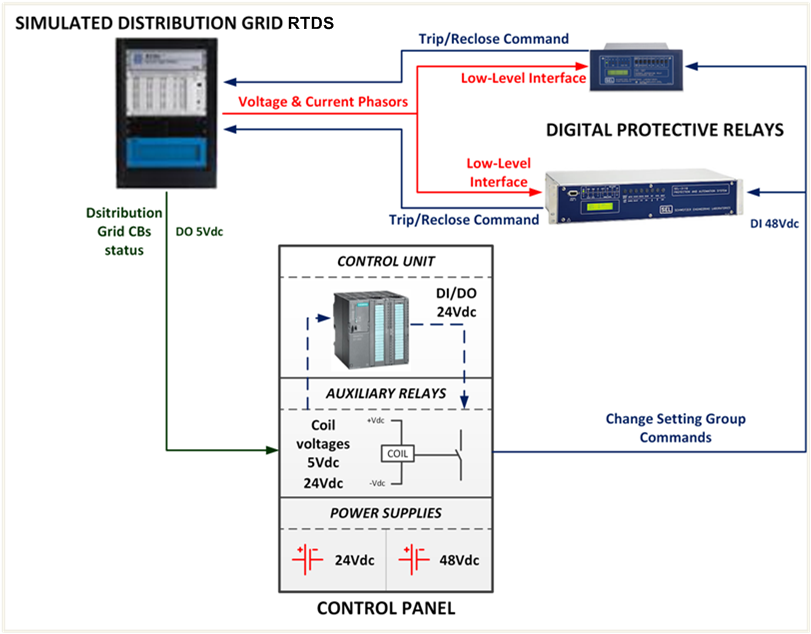
ADAPTIVE PROTECTION SYSTEM IN DISTRIBUTION GRIDS WITH DER PENETRATION
Protection in Power Systems aims to identify and isolate areas of the electrical network during a fault, so asto avoid dangerous situations for persons, irreparable damage to equipment and reduce the impact on the remaining healthy system. More...
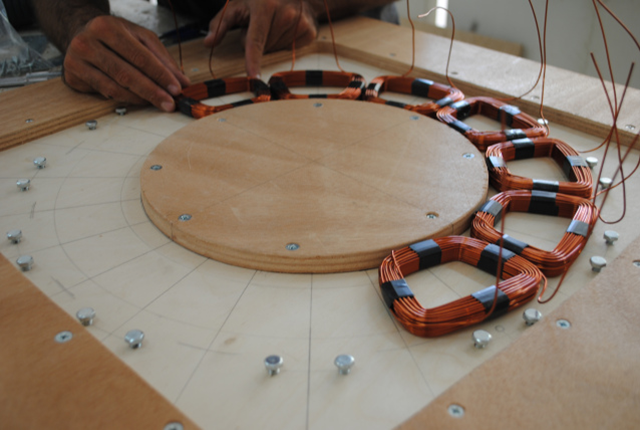
SMALL WIND TURBINE CONSTRUCTION AND TESTING
The study and simulation of small wind turbines for rural electrification applications follows local manufacturing wich enables the user with the ability of local maintenance and immediate repairs of possible failures. In the workshop, small wind turbines are constructed from scratch by undergraduate students. Up until now, small wind turbines for battery charging and grid connection have been manufactured, with rotor diameters of up to 4.3 meters. More...

PV INVERTER TESTING ACCORDING TO STANDARDS
The laboratory operates the necessary equipment to perform tests on photovoltaic inverters according to standards. A PV Simulator by Regatron (3x TopCon Quadro Programmable DC Power Supply) features fully controllable and customizable voltage-current characteristics (V-I), and a Linear Amplifier/Grid Simulator by Spitzenberger & Spies (PAS 5000 – 4 Quadrant Linear Amplifier 5kVA) applies voltage (dips, introduction of harmonics etc) and frequency variations on the inverter. In this way a testing environment is created for the testing of both the direct current (DC) and alternating current (AC) side of the inverter. By appropriately controlling the two simulators, the necessary conditions specified by the standards for PV inverter tests are represented. More...
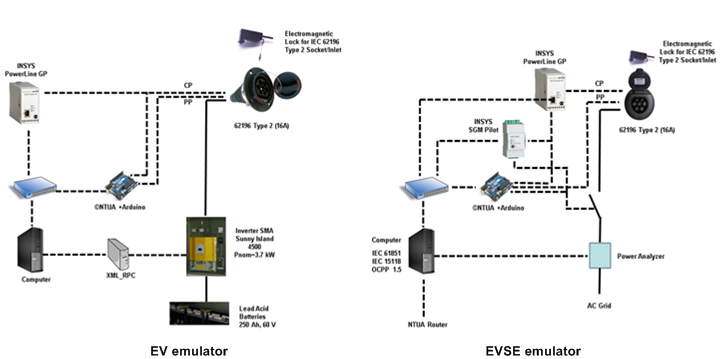
E-MOBILITY LAB FACILITIES
The lab facilities which can be exploited for e-mobility applications. More...
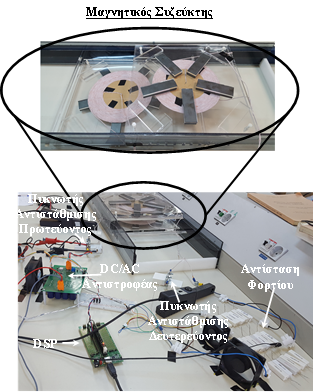
INDUCTIVE CHARGING OF ELECTRIC VEHICLES
Inductive charging allows the wireless energy transfer between the charging station and the vehicle. The operational principle of inductive charging is similar to a transformer; energy is transferred through an air-gap from a primary to a secondary coil. In the case of inductive charging, however, the two coils operate as a loosely coupled transformer, allowing the energy transfer through a relatively large air-gap. More...
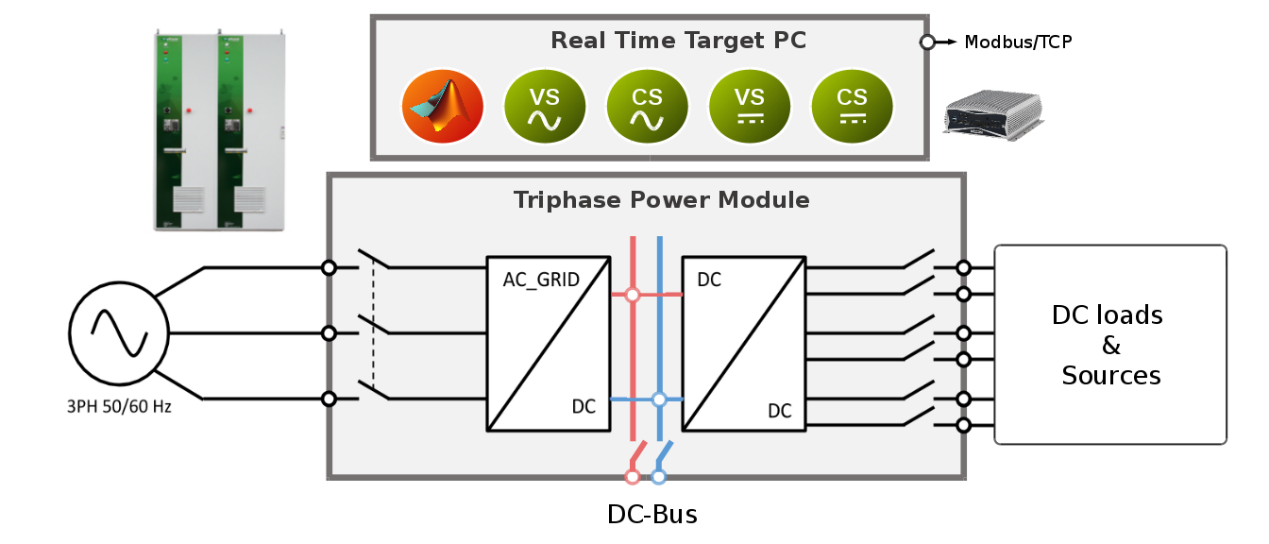
FLEXIBLE POWER ELECTRONICS CONFIGURATION FOR COUPLING RES & STORAGE
Nowadays, power electronics are applied in many applications, playing a critical role on the transformation of the current electric grid into the next-generation grid.
The use of rapid prototyping tools provides the designer with a powerful platform to test and develop new ideas and concepts. These rapid prototyping approaches greatly reduce the time and effort required for the overall design process. Traditionally modeling/simulation and implementation have been two distinct tasks. Rapid prototyping tools aim to bridge the gap between simulation and implementation and make the power electronic circuit design as simple as possible. More...
An overview of the Smart RUE lab is illustrated in the below figure:
